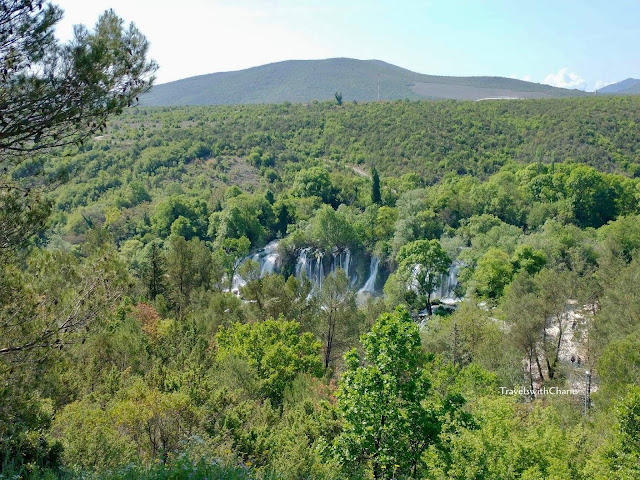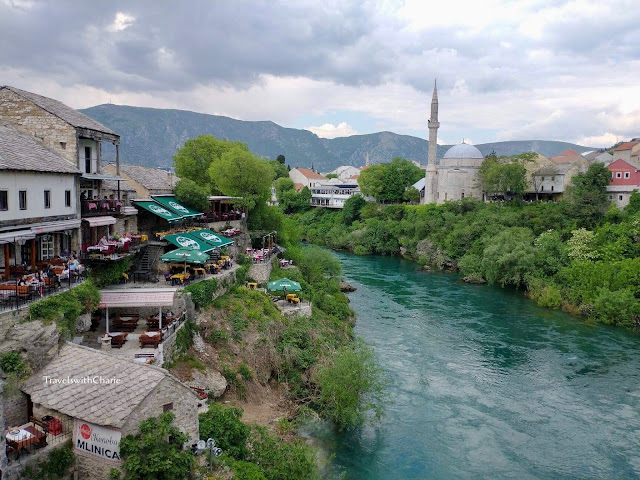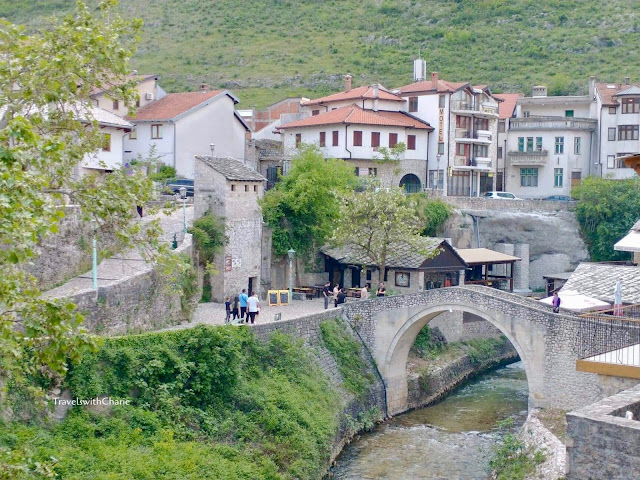Pelješac Bridge
Our first stop in Herzegovina was at Neum where we had a beautiful view of the channel leading to the Adriatic Sea and the new Pelješac bridge which links Southern Croatia to the mainland of Croatia. This 1.5 mile long bridge cuts travel to the mainland by 37 minutes and bypasses the two border crossings between Croatia and Bosnia Herzegovina. Traffic at the borders can be frustrating especially when there are big tour buses waiting to get through.
Neum
Kravica wildflowers in May
Kravica Falls
Kravica Falls is 25 miles south of Mostar. It’s a popular destination especially in the summer months. There’s an entrance fee. There are also restaurants, souvenir stalls and a huge parking lot for which there is a small fee.
Medjugorje
My pilgrimage to Medjugorje story here: https://www.travelswithcharie.com/2022/05/the-medjugorje-pilgrimage-trail.htmlApparition Hill, Medjugorje
Stari Most
For more information about Stare Most, check my travel article here: https://www.travelswithcharie.com/2022/05/highlights-of-mostar.htmlNeretva River and Koski Mehmed Pasha Mosque
Minaret of Tabačica Dzamija Mosque, Old Town Mostar
The Hammam Museum is in the background. The hammam (public bath) was widely used during the Ottoman Empire. This hammam was built between the late 16th and early 17th centuries and restored after the Bosnian war.
Kriva Cuprija (Crooked Bridge) is the experimental model of Stari Most
Catholic Church of St. Peter and Paul
Popovo Polje
Driving south from Mostar towards Dubrovnik, we passed the karstic valley of Popovo. This is my favorite region in Herzegovina and it’s easy to understand why.
How to get to Herzegovina from Dubrovnik:
The best way to see Herzegovina without worrying about driving or border crossings is by taking a small group tour from Dubrovnik with selectdubrovnik.com. But if you want to spend more time discovering Herzegovina, renting a car might be the better option. Check with the rental company if you can take the car to another country (and get the documents you need to present to border patrol) if you are driving from Croatia. Here are some other options: https://www.rome2rio.com/map/Dubrovnik/Mostar#r/Drive-train
*****
Images by TravelswihCharie












